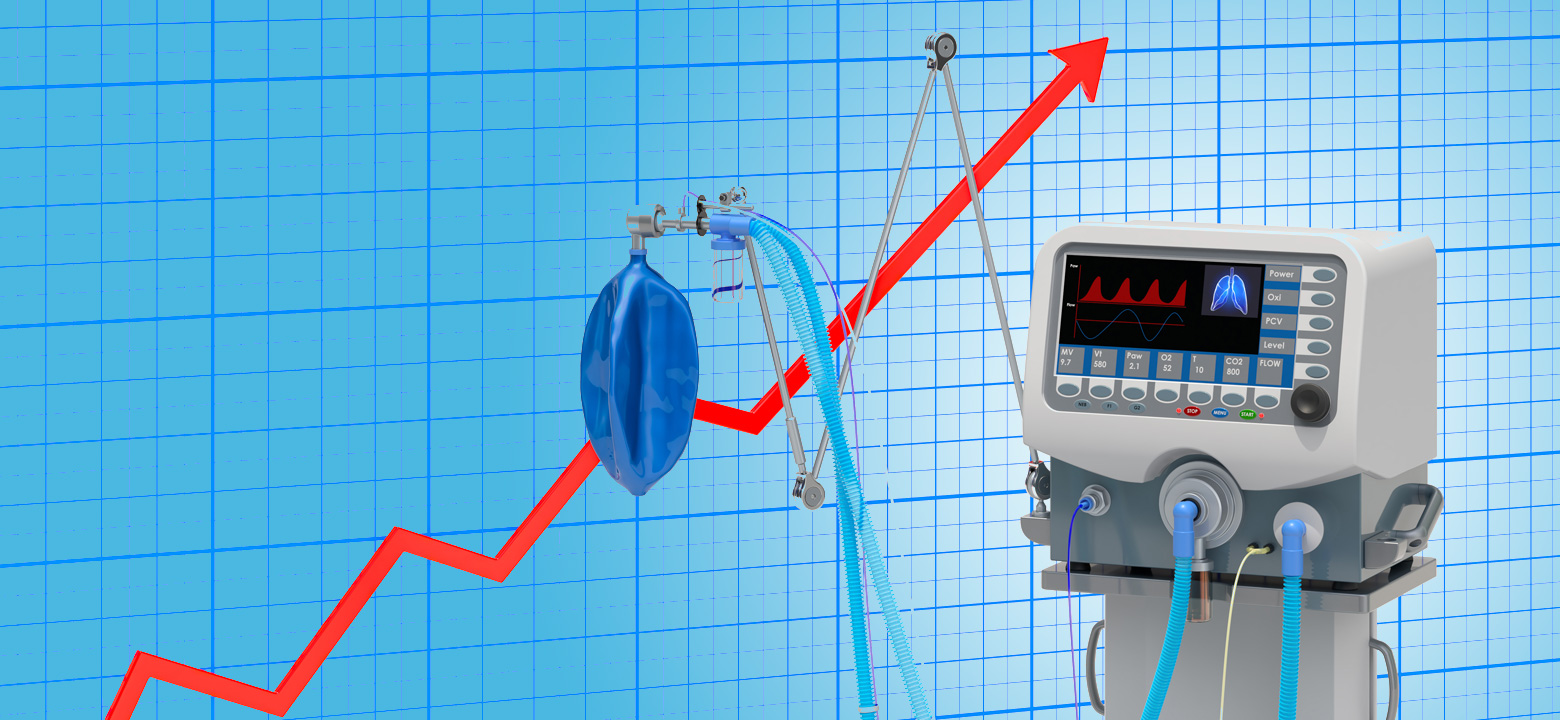
With the continuing battle against COVID-19, the biggest limiting factor facing hospitals isn't funding—it's availability. Most don't have enough ventilators to meet their needs, and obtaining more has proven to be problematic. Companies in the aerospace industry are stepping up to provide them with these crucial machines, even creating new and improved prototypes that can be made better, cheaper, and faster.
Ventilators are sophisticated pieces of machinery that keep patients alive by essentially breathing for them, forcing air in and out of the lungs via a tube placed into the trachea. One of the most dangerous symptoms of COVID-19 is lung inflammation, which makes it much more difficult for patients to breathe. This causes their respiratory rate to increase, effectively making their already-taxed respiratory system work much harder. At the hospital, doctors may choose to sedate these patients, administer muscle relaxers, and perform an intubation to allow a ventilator to take over breathing for them.
Under normal circumstances, patients who require ventilators are relatively uncommon. That's why there's a shortage of the machines right now—while COVID-19 has dramatically increased the number of patients that need help breathing, hospitals aren't equipped to deal with that kind of surge. Since the novel coronavirus is a virus, there is no real cure. Patients who need ventilators generally have to stay on them until they are well enough to breathe on their own, which may take weeks. This is why stepping up production of ventilators is so important; not only do hospitals needs more of them to begin with, the ones they have are going to be occupied for awhile.
Recently, Adcor Industries announced their new type of ventilator. Jimmy Stavrakis, the brain behind the prototype, described it as able to perform the functions of a manual and automatic ventilator, using a much simpler and less expensive design. The East Baltimore aerospace manufacturing and engineering company is hoping to fast-track FDA approval of their prototype so they can begin production. Once they do, they anticipate being able to produce up to hundreds per day.
While the prospect of a new, more cost-effective ventilator design is exciting, there are working designs already on the market. One of the challenges facing aerospace manufacturers hoping to pivot to ventilator manufacturing is the difficulty of tapping into new supply chains to secure necessary parts and materials they don't already have. The Advanced Medical Technology Association (AdvaMed) recently confirmed plans to launch VentConnect—a platform born of a collaboration between the Aerospace Industries Association (AIA), Google, and other developers to help manufacturers connect to global suppliers quickly.
U.S. defense manufacturers are also working with VentConnect to supply needed parts. These companies have chosen not to release their names, as they don't want publicity for their efforts.
Ventilators are made up of nearly two thousand individual parts. Many of these are already used by aerospace manufacturers, while others are unique. Getting hold of these parts is what platforms like VentConnect help facilitate, while companies like Skilled Manufacturing Incorporated (SMI) are working to produce prototypes. When one of the company's automotive customers requested aluminum parts destined for new ventilators, the company quickly examined the blueprints and submitted prototypes. Since SMI is NADCAP-certified and has a clean room, they are ideally suited to produce parts for medical equipment.
Ohio automotive and aerospace parts manufacturer Dan T. Moore Company was recently tapped by non-profit MedWorks to design their own ventilator. Within a week, two of Moore's manufacturing engineers had a new prototype. It isn't built like a conventional ventilator—instead, it's based on the resuscitation equipment used in ambulances, with a device built around it to automatically deliver compressions at the correct speed. Since that equipment is already FDA-approved and in use by medical professionals, it was easy for the company to obtain FDA approval for their design. The company began producing ventilators in late April under the name SecondBreath LLC, and is already working on improved versions of their original design.
COVID-19 has dramatically increased the need for ventilators in a very short period of time—too short for medical device manufacturers to respond to the need on their own. With platforms like VentConnect and innovative designs like those put forth by SecondBreath LLC and Adcor Industries, the aerospace industry is stepping up to help make sure that patients get the breathing assistance they need.